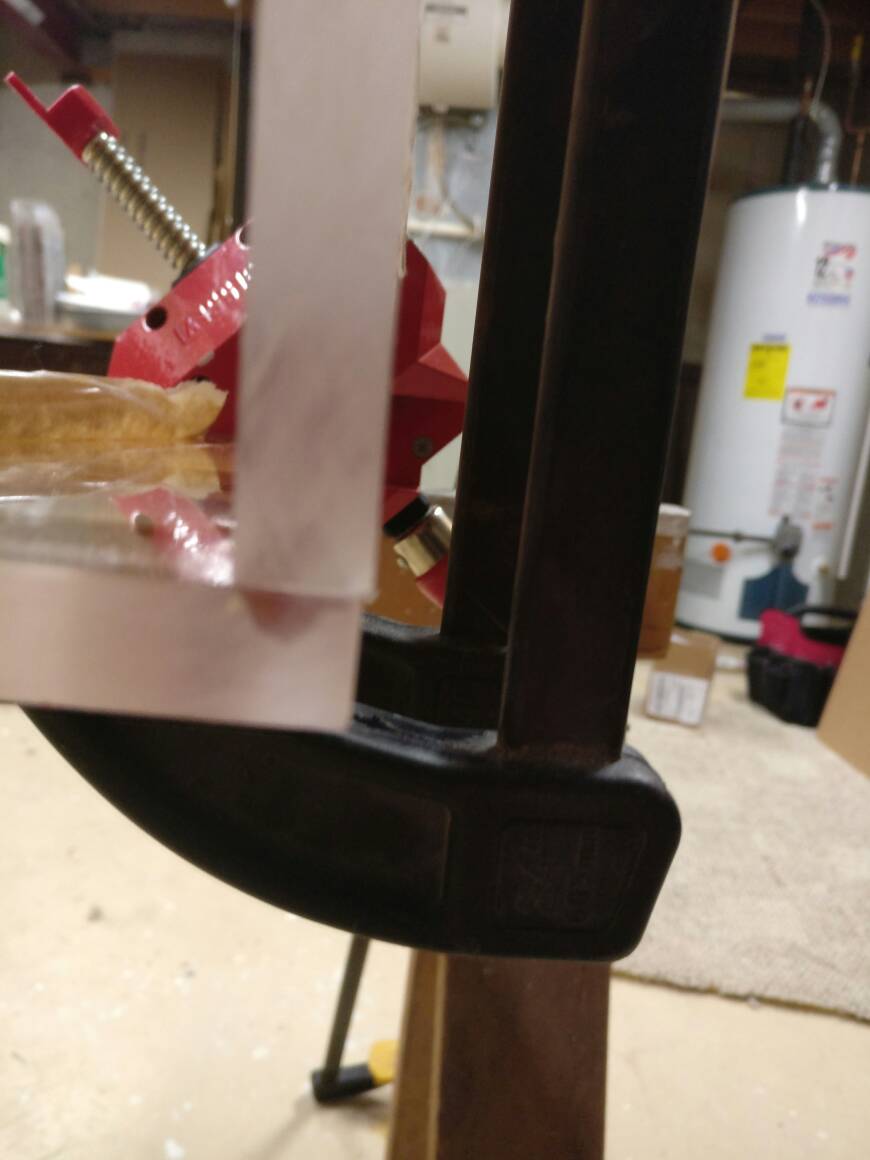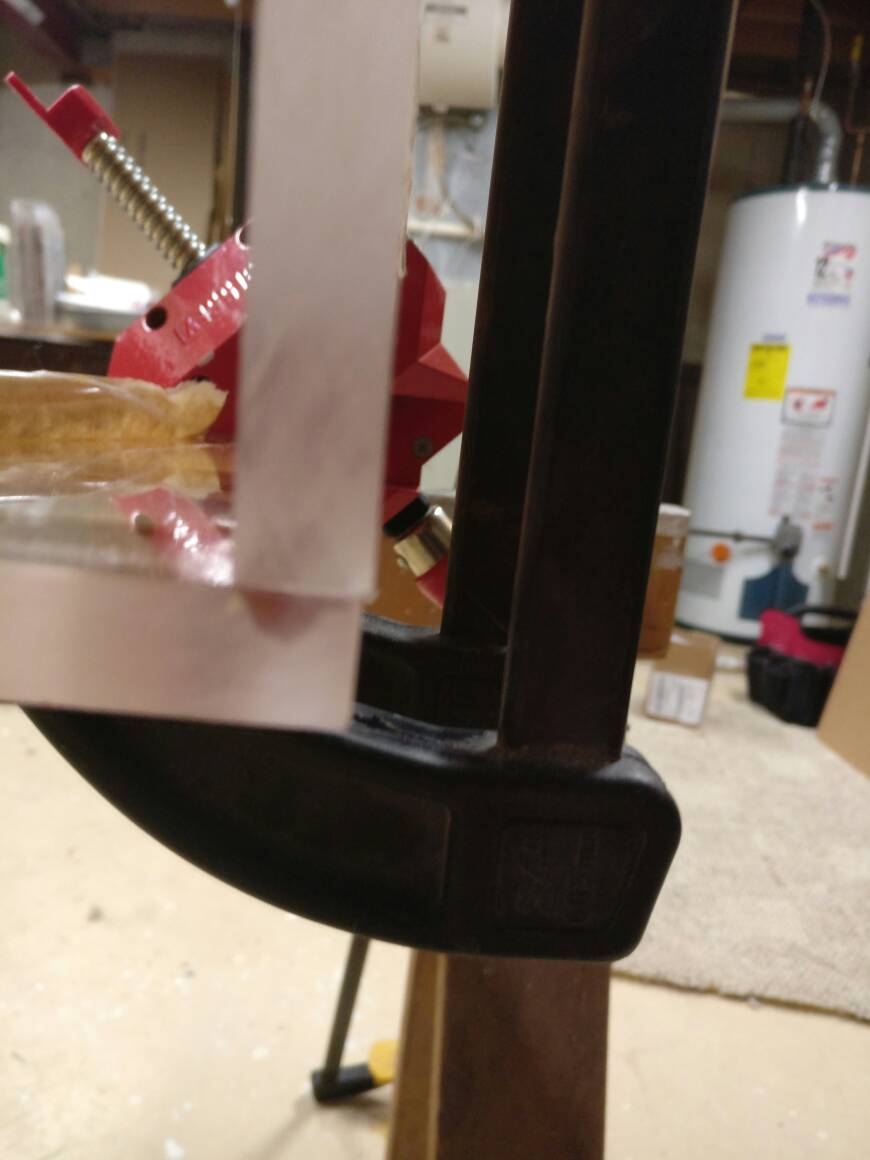That's what I figured you were asking about, just wanted to be sure / not assume
I'm not sure that issue is really "fixable". Aesthetically, you could create a small dam and pour in some Weld-On 40 and then router that so that it's flush, but that's a lot of work for not much benefit.
Or, you could wet sand that end to round off the corner and then blend that sanding line into the face of the side panel, which would get rid of the ridge. But there will be quite a bit of sanding and polishing involved to get that looking "clean". That would probably be easier than the WO40 method, or maybe just as difficult/time consuming/expensive
A few comments though regarding your jigs, the use of corner clamps and bar clamps probably isn't the best method
Corner clamps are made for the assumption that you want the 2 pieces to be flush on the outer corner. This is not the case with acrylic, you want the bottom piece to overlap so that you can have a fillet formed on both sides. The one you show looks like a Bessey which would allow this but on the inside corner, there is a point that would prevent the fillet from forming on that side, where it's critical. Even one without that is not necessarily ideal due to the nature of the welding process. It's difficult to explain, but it's just not the best tool to use.
Bar clamps are usually not needed if you use a proper base underneath the joint. Also you can't use them if you have the proper base. Then, you don't want to use them because you don't want to necessarily squeeze out all the solvent (resulting in a "dry joint") in the process of getting the joint tight (meaning, making sure the 2 pieces are in full contact).
What you want to do to solve all of these issue is use a 90 degree jig that sits along the entire inside of the joint and clamp the vertical piece to that. Then underneath the joint, use foam-covered MDF strips, shims to even out the joint, and pins in the joint to create the gap. You set up the whole joint dry, with the pieces in their final positions, do your shimming, then once the joint has full contact, you clean the surfaces & blow them off, insert the pins, run the solvent, wait ~20 seconds or so, pull the pins, and adjust the joint so that everything is square, then momentarily loosen each of the clamps between the 90 degree jig and the vertical piece to let the piece settle, if needed. Then don't touch it for 2-4 hours, and don't route for 20+.
You can see examples of the 90 degree joint and foam boards here:
http://www.reefcentral.com/forums/showthread.php?t=390652


